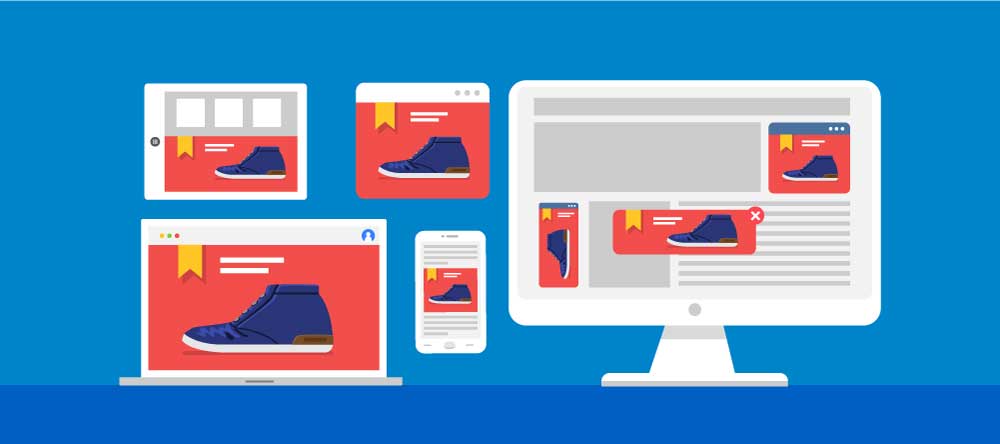Spring is a critical time for your HVAC business. This busy season can allow your business to thrive and grow, but only if you can get your name in front of key customers. And, at the same time that you are looking to ramp up your marketing efforts, so is your competition. The goal is to ensure that your marketing strategy lands you high-quality leads and prevents your competitors from stealing your existing customers via their own marketing tactics.
Before you head into the spring season, prepare your HVAC business with these 12 marketing tips:
1. Finalize Your Promotions and Campaigns
During the spring months, you will most likely spend a large amount of your time managing staff, ensuring schedules are met, and focusing on the operational side of your business. This will make it hard for you to find time to create new promotions and marketing campaigns. Instead of waiting until the busy season arrives, finalize all your promotions and campaigns ahead of time.
Make sure that you define what promotions you will run from the beginning of the spring season to the end.
Be sure to outline all your campaigns and that you define what your key messages will be during this season. This will not only help things run smoother when work ramps up, but it will also assist you in keeping a clear, consistent message across marketing campaigns.
For example, if you plan to run a special on new A/C installations, be sure that all your marketing channels offer the same deal and that the crew manning your phones is aware of the exact promotions being offered. This will help ensure a consistent experience and message for potential customers.

2. Set a Marketing Budget
Predetermining your spring marketing budget will help you take a strategic approach to your marketing campaigns. Take the time to determine what you are willing to spend on digital marketing campaigns, as well as any other direct mail promotions you plan to run.
With a marketing budget clearly set, break down what you want to spend on each channel. This will help you stay within the right parameters and prevent overspending on spring campaigns, which can lead to less marketing spend for future seasons. Setting a budget is also extremely beneficial when you work with an agency to ensure that you are all on the same page.
3. Strategize Your Channels
With your promotions set and your marketing spend determined, it is time to decide which channels you’ll use for marketing this spring. Common channels for HVAC businesses include:
- Google Ads and Display Ads: This includes both pay-per-click (PPC) ads and retargeting ads. These are highly effective for reaching new customers and work well when your competitors outrank you organically.
- Social Media Ads: With the majority of adults using at least one social media platform, it can be highly effective to target both existing and new customers via social media ads. You can boost posts, pay for ad placements, and target specific customer lists.
- Email Marketing: Itis hard to beat the return on investment you get with email. For every dollar spent, you’ll see an average return of $44. Email can be a highly effective method for reaching out to existing customers, sending personalized springtime reminders and promotions.
As you consider what channels to invest in, you can use data from previous years to focus on which channels provide your HVAC business with the best return on money spent.
4. Double Down on Organic Search
While a lot of your marketing campaigns will focus on paid ads, make sure you don’t neglect your focus on ranking for important keywords organically. When someone in your area searches for HVAC services nearby, you want to show up on the first page of Google’s search results. While paying to be surfaced will work upfront, the best long-term investment you can make is in search engine optimization (SEO).
During the spring season, use the following checklist to make sure you’re doubling down on your organic efforts:
- Continue to update your website with new information and services.
- Publish fresh content to your website’s blog.
- Add updated information to your Google business listing.
- Keep your website plugins updated and ensure that everything is loading smoothly.
- Make sure you still target the right keywords for your current business operations.
Ranking organically for keywords in your local area takes time. It is important to remain consistent in your approach and set aside money to invest in organic efforts. Remember, long-term organic is highly profitable since it doesn’t require you to pay for clicks or ad placements.
5. Set Clear, Measurable Goals
Never enter into a busy marketing season without clear, measurable goals. When you simply set an ad campaign into motion without any defined goal, it can be hard to know whether or not you are on track halfway through the season.
Goals should revolve around measurable items that lead directly to profits for your business. Examples include:
- Lead conversion rates: How many of your digital leads are converting into scheduled service visits? Make sure you know how to track this and set a goal you can measure against.
- Lead costs or customer acquisition costs (CAC): How much does each lead cost you? The goal is to lower your spend for each lead, maximizing your return. This will help ensure that you spend your marketing dollars on the most profitable channels possible.
- New customer acquisition: Whether via your website or social media channel, make sure you track how many new customers your marketing efforts are landing you versus retargeting existing customers.
The good news is that when it comes to digital marketing strategies, there is a wealth of data available that will allow you to set and measure goals. Make sure that you work with your marketing team or outsourced agency to standardize reporting and create benchmarks you can measure against year over year.
6. Rework Your Ad Copy & Imagery
Getting your ads in front of your audience is only half the battle. You need those ads to be compelling enough to move your customers to action. If it’s been a while since you refreshed your ad copy and imagery, take some time to look for areas of improvement.
Use the following checklist to rework your ads:
- Be sure that graphic ads feature high-quality images.
- Update images you have used repeatedly. If possible, ditch stock photos in lieu of quality project or staff photos. People glaze over images that are too repetitive.
- Include a clear call to action in each ad that is easy to act on.
- Make it simple to read your ads. Avoid lengthy copy and keep your messaging clear.
- Showcase what’s in it for the customer right away.
- Use A/B testing to try out a few different iterations of the same ad simultaneously.
7. Respond to Reviews
Before the busy season hits, go back through and respond to any new online reviews that you received during the winter months.
If it’s a positive review, make sure to thank the customer for taking the time to create the review. You can even add a personal touch, calling out something you appreciate about their business.
If it’s a neutral review with both positive and negative comments, thank them for the input and let them know you will act on their feedback.
If it’s an entirely negative review, thank them for leaving the review and provide them with contact information to speak to management. Don’t argue with the review, but state that you’d like to talk to them one-on-one about their complaint.
When customers see that you have recently responded to reviews, it will demonstrate that you communicate with clients and are still actively in operation. Additionally, Google favors businesses that respond to reviews in their local search results.

8. Check Your Website’s Load Time
Investing in paid ads, ramping up your organic search, and funneling customers to your website is only valuable if the website functions well and loads quickly. People have extremely limited patience for websites that won’t load immediately.
Count the number of seconds it takes for your website to load. If it is more than three seconds, you need to speak to your website management team and request that they update your site.
9. Test All Contact Methods
Similar to your website’s speed, the last thing you want to do is to spend money on pushing people to your website, social media pages, or Google business listing only to have your contact methods fail.
Make sure to go through and manually test each form of contact.
- Do all your website forms work? Who is monitoring these inboxes?
- Does your email address work? Make sure someone is responsible for responding to emails.
- Test each phone number you have listed.
- Try submitting a service request via your scheduling tool to see what happens.
- Go through each social media channel and make sure your inboxes are up and running.
- Check the information you have listed in your Google business listing for accuracy.
- Search all business listings and make sure you don’t have any outdated contact information left.
10. Train Your Staff
Hopefully, your marketing strategy will deliver countless new leads to your business and bring back existing customers to schedule spring services. But before your phones start ringing and your inboxes start flooding, take the time to ensure that your staff is well trained on customers service and is aware of any promotions you are offering.
If you haven’t in a while, do a refresher course for all customer-facing staff members on how to provide quality service. Make sure that everyone is aware of their responsibilities and that they respond to all contact channels promptly.
11. Be Ready to Adapt
With everything set in motion, you may feel like there’s nothing left to do but watch the leads pour in. However, even with the best-laid plans, there are bound to be unexpected curve balls thrown at you.
Make sure that you closely monitor your marketing campaigns and adjust as necessary. If you notice early on that a particular ad or customer list is performing poorly, you might need to reduce your spend there and ramp it up elsewhere.
Additionally, what your competition does might necessitate that you increase spend in specific regions and lower it in other areas. Paying attention and adapting your strategy will help you make the most of every marketing dollar.
12. Consider Professional Help
Marketing your HVAC business is complex and requires ongoing work and attention. In some cases, the workload can become too much. Between running your business, managing your staff, and keeping track of your profits, it can be difficult to find time to focus on marketing efforts.
When this occurs, it can be beneficial to seek out the help of a marketing agency. At J&L Marketing, we are proud to provide quality marketing services for HVAC businesses of all sizes. We will work with you to design a marketing strategy that meets your business’s specific needs. During the hectic spring season, let our team help keep your marketing plan on track, freeing you up to focus on running your business. Reach out for a free consultation or to learn more about the specific services we offer.



